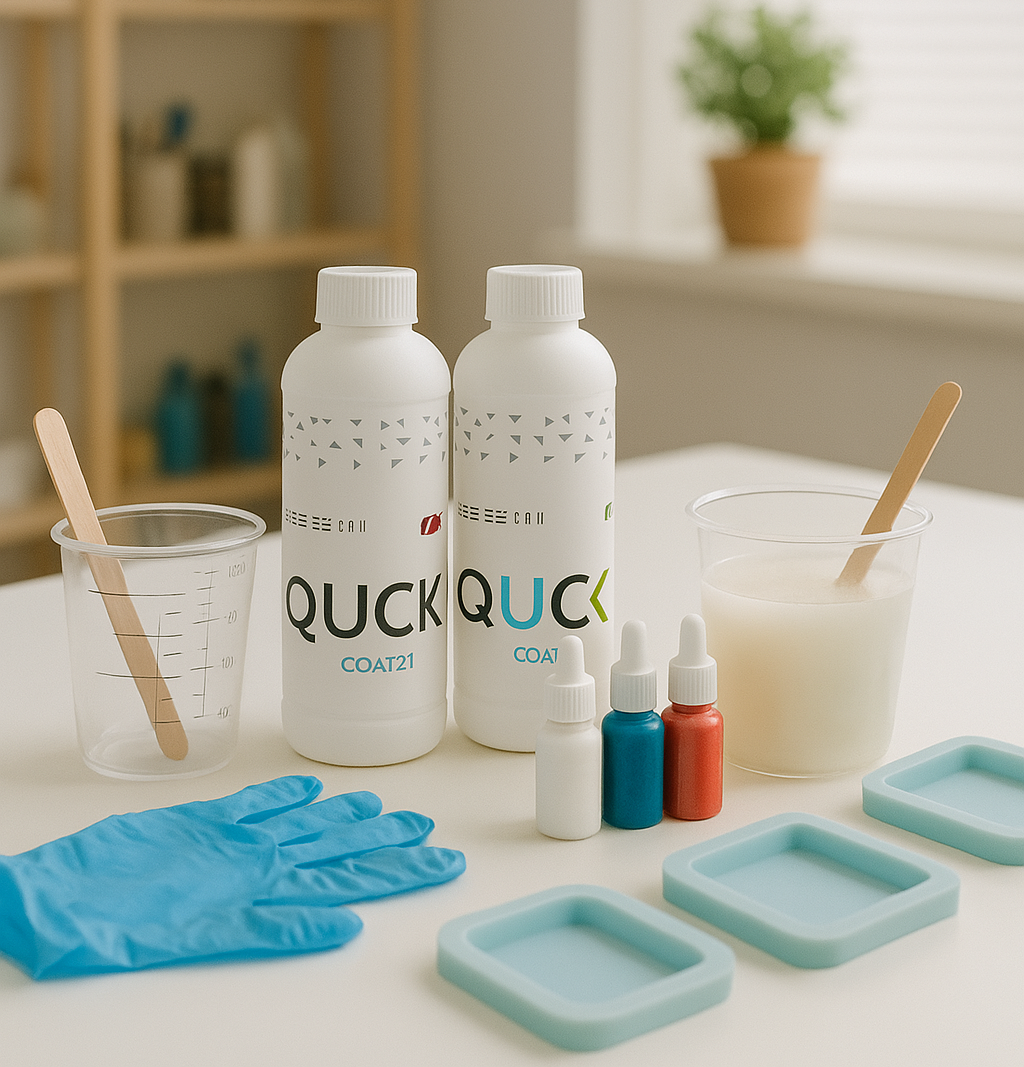
Essential Tips for Working With Epoxy Resin

(Beginner-Friendly Guide From a Fellow Creator)
If you’re getting into epoxy resin art, welcome! 😊 It’s a fun, creative, and (let’s be honest) a little addictive world. But I’ve seen a lot of beginners struggle in the beginning — and trust me, I’ve been there too.
So, I thought I’d share some of my best tips when working with resin, especially for art and DIY projects. Whether you're making geodes, trays, or ocean & beach art, these tips will make your resin art journey a lot smoother.
Let’s get into it.
1️⃣ Always Measure Resin & Hardener Accurately

I can’t stress this enough. Epoxy resin needs the correct mix ratio, or it won’t cure properly. If it says 2:1 or 3:1, follow that by weight — not by volume, unless the brand says so.
👉 I personally use Epoke Quick Coat (2:1), and it gives a lovely clear finish when mixed right. Always use a digital scale and clean mixing cups. No guessing, no “eyeballing.”
2️⃣ Mix Slowly and Don’t Rush

This is where most of us mess up at first. Mixing too fast creates air bubbles. Stir slow and steady for about 3–5 minutes. Don’t forget to scrape the sides and bottom of your cup — that’s where the unmixed resin hides.
Pro tip: If your mix still looks cloudy or has streaks, keep mixing till it’s fully clear.
3️⃣ Know Your Room Temperature

In the UAE, this really matters. Resin doesn’t like extreme temperatures.
Ideal range is between 22°C – 28°C.
☀️ In summer, it cures fast (too fast sometimes).
❄️ In winter, it can get thick or take longer to cure.
If your resin feels too thick, warm the bottles by placing them in warm water (closed!). And keep a heat gun or torch nearby to pop bubbles after pouring.
4️⃣ Prep Your Area Before You Pour

Cover your table, wear gloves, and make sure the surface is level. Resin finds any little slope and runs off.
Keep pets and dust away while it’s curing. If you’re working near a window, cover your piece with a box or container to avoid dust settling.
5️⃣ Pick the Right Resin for Your Project

Not all resins are the same. Some are thin for coating, some thick for art pours. Here’s what I use:
- Quick Coat (2:1) – Great for top coats, fast dry
- Epoke EFX Thick – Perfect for geodes and layered designs
- MegaCast – For deep pours like resin tables
You can find all of these under the resin collection on Resin Art Hub.
6️⃣ Pour in Layers if Going Deep

Thick layers overheat and may crack or bubble. If you're doing deep molds or trays, pour in layers of about 1–1.5 cm and let each layer set before pouring the next.
Yes, it takes time, but better than wasting your work.
7️⃣ Add Resin Pigments Gently

Color makes everything more exciting — but go easy! Add no more than 5-6% pigment into your resin mix.
Use mica powders, resin pastes, or alcohol inks (not acrylic paint; it doesn’t always work with resin). Always do a test if you’re not sure.
👉 I love using metallic mica powders for ocean effects and coasters — they shine beautifully!
8️⃣ Don’t Touch Until It’s Fully Cured

This is the hardest part. I know it’s tempting, but don’t touch your piece too early.
- Touch dry: around 6–8 hours
- Handle: 24 hours
- Fully cured: 48–72 hours (depending on resin type and room temp)
Let it sit in a clean space and avoid moving it. The more patient you are, the better the finish.
9️⃣ Common Beginner Resin Art Mistakes to Avoid

Here are a few things I’ve learned the hard way:
🚫 Mixing the wrong ratio – sticky resin
🚫 Using acrylic paint – can cause cracks or weird textures
🚫 Pouring too thick – overheats and smokes
🚫 Rushing the mix – air bubbles
🚫 Not sealing wood or surface – causes bubbles later
🔧 What Resin Art Materials You Need
If you’re wondering what supplies you’ll need, here’s a basic list:
- Resin Kit (Resin and Hardener)
- Measuring Scale
- Mixing Cups & Sticks
- Gloves
- Silicone Molds (or board/tray base)
- Mica Pigments or Alcohol Inks
- Heat Gun (optional, but helpful)
You can find all these in the Resin Starter Collection – we even deliver the next working day across the UAE and Free Pickup from Al Garhoud, Dubai.🚚
Final Thoughts

Resin art is such a rewarding hobby (or even business!). But it’s all about patience, practice, and using the right tools. These tips should help you avoid the usual beginner mistakes and make your first few projects way more enjoyable.
If you're still unsure which resin to choose or need help with a project, just drop us a message on WhatsApp — we’re always here to help! 💬
Happy pouring, and enjoy the process ✨
Frequently Asked Questions
How do I stop bubbles in my resin?
Bubbles happen when you mix too fast or pour too quickly. Always stir gently and use a heat gun or torch to pop surface bubbles after pouring. Letting the resin sit for a minute after mixing also helps release trapped air.
Why is my resin still soft or sticky after curing?
This usually means the mixing ratio was off, or the resin wasn’t mixed properly. Make sure you use a digital scale and mix thoroughly for 3–5 minutes. Also, avoid pouring resin in a very cold room — it affects curing time.
Can I use any mold for resin art?
Use silicone molds for epoxy as they are flexible and nonstick. Avoid plastic molds that may bond with resin or break. Ensure the mold is clean and dry before use.
What’s the best temperature to work with epoxy resin?
Resin works best between 22°C to 28°C. If it’s too cold, your resin may get thick or take too long to cure. In hotter temperatures, it can overheat or cure too quickly. Keep your workspace controlled for best results.
Can I color resin with acrylic paint or food dye?
It’s not recommended. Acrylic paint or water-based dyes can affect resin chemistry and lead to cracks or sticky surfaces. Use resin-safe pigments, mica powders, or alcohol inks for best results and long-lasting color.
